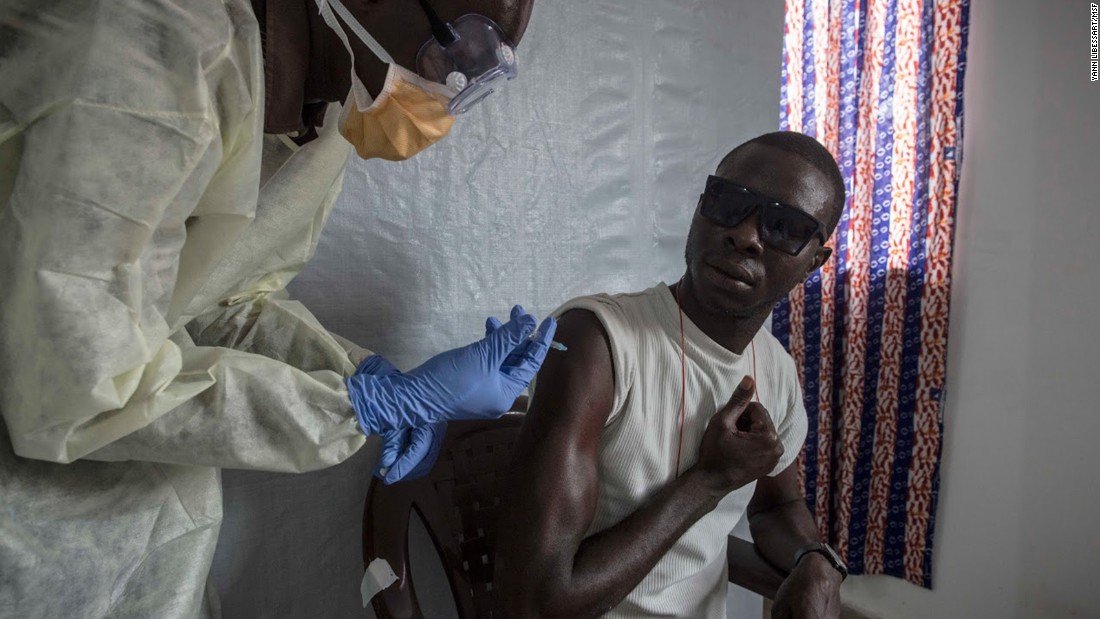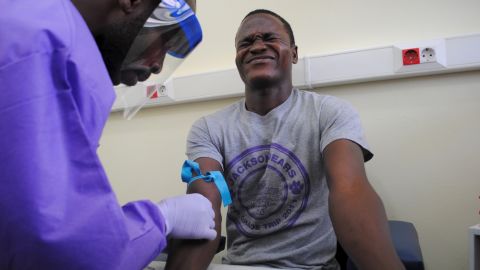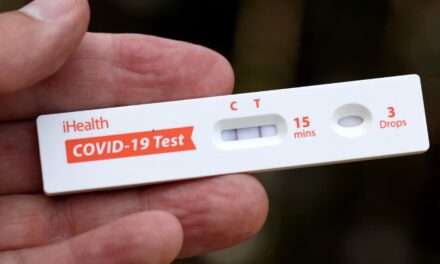
Ebola Fast Facts

CNN —
Here’s a look at Ebola, a virus with a high fatality rate that was first identified in Africa in 1976.
Ebola hemorrhagic fever is a disease caused by one of five different Ebola viruses. Four of the strains can cause severe illness in humans and animals. The fifth, Reston virus, has caused illness in some animals, but not in humans.
The first human outbreaks occurred in 1976, one in northern Zaire (now Democratic Republic of the Congo) in central Africa: and the other, in southern Sudan (now South Sudan). The virus is named after the Ebola River, where the virus was first recognized in 1976, according to the Centers for Disease Control and Prevention (CDC).
Ebola is extremely infectious but not extremely contagious. It is infectious, because an infinitesimally small amount can cause illness. Laboratory experiments on nonhuman primates suggest that even a single virus may be enough to trigger a fatal infection.
Ebola is considered moderately contagious because the virus is not transmitted through the air.
Humans can be infected by other humans if they come in contact with body fluids from an infected person or contaminated objects from infected persons. Humans can also be exposed to the virus, for example, by butchering infected animals.
Symptoms of Ebola typically include: weakness, fever, aches, diarrhea, vomiting and stomach pain. Additional experiences include rash, red eyes, chest pain, throat soreness, difficulty breathing or swallowing and bleeding (including internal).
Typically, symptoms appear eight to 10 days after exposure to the virus, but the incubation period can span two to 21 days.
Ebola is not transmissible if someone is asymptomatic and usually not after someone has recovered from it. However, the virus has been found in the semen of men who have recovered from Ebola and possibly could be transmitted from contact with that semen.
There are five subspecies of the Ebola virus: Zaire ebolavirus (EBOV), Bundibugyo ebolavirus (BDBV), Sudan ebolavirus (SUDV), Taï Forest ebolavirus (TAFV) and Reston ebolavirus (RESTV).
Click here for the CDC’s list of known cases and outbreaks.
(Full historical timeline at bottom)
March 2014 – The CDC issues its initial announcement on an outbreak in Guinea, and reports of cases in Liberia and Sierra Leone.
April 16, 2014 – The New England Journal of Medicine publishes a report, speculating that the current outbreak’s Patient Zero was a 2-year-old from Guinea. The child died on December 6, 2013, followed by his mother, sister and grandmother over the next month.
August 8, 2014 – Experts at the World Health Organization (WHO) declare the Ebola epidemic ravaging West Africa an international health emergency that requires a coordinated global approach, describing it as the worst outbreak in the four-decade history of tracking the disease.
August 19, 2014 – Liberia’s President Ellen Johnson Sirleaf declares a nationwide curfew beginning August 20 and orders two communities to be completely quarantined, with no movement into or out of the areas.
September 16, 2014 – US President Barack Obama calls the efforts to combat the Ebola outbreak centered in West Africa “the largest international response in the history of the CDC.” Speaking from the CDC headquarters in Atlanta, Obama adds that “faced with this outbreak, the world is looking to” the United States to lead international efforts to combat the virus.
October 6, 2014 – A nurse’s assistant in Spain becomes the first person known to have contracted Ebola outside Africa in the current outbreak. The woman helped treat two Spanish missionaries, both of whom had contracted Ebola in West Africa, one in Liberia and the other in Sierra Leone. Both died after returning to Spain. On October 19, Spain’s Special Ebola Committee says that nurse’s aide Teresa Romero Ramos is considered free of the Ebola virus.
October 8, 2014 – Thomas Eric Duncan, a Liberian citizen who was visiting the United States, dies of Ebola in Dallas.
October 11, 2014 – Nina Pham, a Dallas nurse who cared for Duncan, tests positive for Ebola during a preliminary blood test. She is the first person to contract Ebola on American soil.
October 15, 2014 – Amber Vinson, a second Dallas nurse who cared for Duncan, is diagnosed with Ebola. Authorities say Vinson flew on a commercial jet from Cleveland to Dallas days before testing positive for Ebola.
October 20, 2014 – Under fire in the wake of Ebola cases involving two Dallas nurses, the CDC issues updated Ebola guidelines that stress the importance of more training and supervision, and recommend that no skin be exposed when workers are wearing personal protective equipment, or PPE.
October 23, 2014 – Craig Spencer, a 33-year-old doctor who recently returned from Guinea, tests positive for Ebola – the first case of the deadly virus in New York and the fourth diagnosed in the United States.
October 24, 2014 – In response to the New York Ebola case, the governors of New York and New Jersey announce that their states are stepping up airport screening beyond federal requirements for travelers from West Africa. The new protocol mandates a quarantine for any individual, including medical personnel, who has had direct contact with individuals infected with Ebola while in Liberia, Sierra Leone or Guinea. The policy allows the states to determine hospitalization or quarantine for up to 21 days for other travelers from affected countries.
January 18, 2015 – Mali is declared Ebola free after no new cases in 42 days.
February 22, 2015 – Liberia reopens its land border crossings shut down during the Ebola outbreak, and President Sirleaf also lifts a nationwide curfew imposed in August to help combat the virus.
May 9, 2015 – The WHO declares an end to the Ebola outbreak in Liberia. More than 4,000 people died.
November 2015 – Liberia’s health ministry says three new, confirmed cases of Ebola have emerged in the country.
December 29, 2015 – WHO declares Guinea is free of Ebola after 42 days pass since the last person confirmed to have the virus was tested negative for a second time.
January 14, 2016 – A statement is released by the UN stating that “For the first time since this devastating outbreak began, all known chains of transmission of Ebola in West Africa have been stopped and no new cases have been reported since the end of November.”
March 29, 2016 – The WHO director-general lifts the Public Health Emergency of International Concern related to the 2014-2016 Ebola outbreak in West Africa.
*Includes information about Ebola and other outbreaks resulting in more than 100 deaths or special cases.
1976 – First recognition of the EBOV disease is in Zaire (now Democratic Republic of the Congo). The outbreak has 318 reported human cases, leading to 280 deaths. An SUDV outbreak also occurs in Sudan (now South Sudan), which incurs 284 cases and 151 deaths.
1995 – An outbreak in the Democratic Republic of the Congo (DRC) leads to 315 reported cases and at least 250 deaths.
2000-2001 – A Ugandan outbreak (SUDV) results in 425 human cases and 224 deaths.
December 2002-April 2003 – An EBOV outbreak in ROC results in 143 reported cases and 128 deaths.
2007 – An EBOV outbreak occurs in the DRC, 187 of the 264 cases reported result in death. In late 2007, an outbreak in Uganda leads to 37 deaths, with 149 cases reported in total.
September 30, 2014 – Dr. Thomas Frieden, director of the CDC, announces the first diagnosed case of Ebola in the United States. The person has been hospitalized and isolated at Texas Health Presbyterian Hospital in Dallas since September 28.
July 31, 2015 – The CDC announces that a newly developed Ebola vaccine is “highly effective” and could help prevent its spread in the current and future outbreaks.
December 22, 2016 – The British medical journal The Lancet publishes a story about a new Ebola vaccine that tested 100% effective during trials of the drug. The study was conducted in Guinea with more than 11,000 people.
August 1, 2018 – The DRC’s Ministry of Health declares an Ebola virus outbreak in five health zones in North Kivu province and one health zone in Ituri province. On July 17, 2019, the WHO announces that the outbreak constitutes a public health emergency of international concern. On June 25, 2020, the DRC announces that the outbreak is officially over. A total of 3,481 cases were reported, including 2,299 deaths and 1,162 survivors.
August 12, 2019 – Two new Ebola treatments are proving so effective they are being offered to all patients in the DRC. Initial results found that 499 patients who received the two effective drugs had a higher chance of survival – the mortality rate for REGN-EB3 and mAb114 was 29% and 34% respectively. The two drugs worked even better for patients who were treated early – the mortality rate dropped to 6% for REGN-EB3 and 11% for mAb114, according to Anthony Fauci, director of the National Institute of Allergy and Infectious Diseases and one of the researchers leading the trial.
December 19, 2019 – The US Food and Drug administration announces the approval of a vaccine for the prevention of the Ebola virus for the first time in the United States. The vaccine, Ervebo, was developed by Merck and protects against Ebola virus disease caused by Zaire ebolavirus in people 18 and older.
October 14, 2020 – Inmazeb (REGN-EB3), a mixture of three monoclonal antibodies, becomes the first FDA-approved treatment for the Ebola virus. In December, the FDA approves a second treatment, Ebanga (mAb114).
September 20, 2022 – Uganda declares an outbreak of Ebola after a case of the relatively rare Sudan strain is confirmed in the country. The WHO’s Africa office states the case was confirmed after testing a sample from a 24-year-old man from the country’s Mubende district who died after displaying symptoms.

Photos: The Ebola epidemic
Stringer/Reuters/Landov
An Ebola survivor participates in a study in Monrovia, Liberia, on June 17, 2015. The country launched a five-year study to unravel the mystery of the long-term health effects that plague survivors of the viral disease. Since the epidemic started more than a year ago in a remote village in Guinea, more than 11,000 people have died, the vast majority in three West African nations, according to the latest numbers from the World Health Organization. And that number is believed to be low, since there was widespread under-reporting of cases, according to WHO.

Photos: The Ebola epidemic
James Giahyue/Reuters/Landov
Women in Monrovia celebrate after the World Health Organization declared Liberia Ebola-free on May 9, 2015. Other cases have recurred since, however. Two people in Liberia have died of the disease since the end of June, just weeks after the WHO declared the nation free of the disease.

Photos: The Ebola epidemic
AHMED JALLANZO/EPA/Landov
A man walks past an Ebola awareness painting in Monrovia on March 22, 2015.

Photos: The Ebola epidemic
Luke Sharrett/Getty Images
Soldiers from the U.S. Army’s 101st Airborne Division walk across the tarmac at Campbell Army Airfield before reuniting with their families at a homecoming ceremony March 21, 2015 in Fort Campbell, Kentucky. The 162 soldiers were deployed in Liberia, where they helped fight the spread of Ebola.

Photos: The Ebola epidemic
Abbas Dulleh/AP
Relatives weep for a loved one who it was believed died from Ebola, at a graveyard on the outskirts of Monrovia on March 11, 2015.

Photos: The Ebola epidemic
John Moore/Getty Images
Doctors Without Borders staffer Alex Eilert Paulsen watches as mattresses and bed frames burn at the Ebola Treatment Unit in Paynesville, Liberia, on January 31, 2015. The organization reduced its number of beds from 250 to 30 as gains were made in battling the virus.

Photos: The Ebola epidemic
stringer/AFP/Getty Images
Pauline Cafferkey, a Scottish woman diagnosed with Ebola, is put on a plane in Glasgow, Scotland, on December 30, 2014. Cafferkey, a 39-year-old nurse who volunteered in Sierra Leone, was being transported to London for treatment.

Photos: The Ebola epidemic
FRANCISCO LEONG/AFP/Getty Images
A child who survived the Ebola virus is fed by another survivor at a treatment center on the outskirts of Freetown, Sierra Leone, on November 11, 2014.

Photos: The Ebola epidemic
Abbas Dulleh/AP
Health workers in Monrovia cover the body of a man suspected of dying from the Ebola virus on October 31, 2014.

Photos: The Ebola epidemic
Robert F. Bukaty/AP
Kaci Hickox leaves her home in Fort Kent, Maine, to take a bike ride with her boyfriend on October 30, 2014. Hickox, a nurse, recently returned to the United States from West Africa, where she treated Ebola victims. State authorities wanted her to avoid public places for 21 days — the virus’ incubation period. But Hickox, who twice tested negative for Ebola, said she would defy efforts to keep her quarantined at home.

Photos: The Ebola epidemic
TONY KARUMBA/AFP/Getty Images
Health officials in Nairobi, Kenya, prepare to screen passengers arriving at the Jomo Kenyatta International Airport on October 28, 2014.

Photos: The Ebola epidemic
Evan Vucci/AP
U.S. President Barack Obama hugs Ebola survivor Nina Pham in the Oval Office of the White House on October 24, 2014. Pham, one of two Dallas nurses diagnosed with the virus, was declared Ebola-free after being treated at a hospital in Bethesda, Maryland. The other nurse, Amber Vinson (not pictured), was treated in Atlanta and also declared Ebola-free.

Photos: The Ebola epidemic
Michael Duff/AP
Health workers in Port Loko, Sierra Leone, transport the body of a person who is suspected to have died of Ebola on October 21, 2014.

Photos: The Ebola epidemic
Abbas Dulleh/AP
Health workers bury a body on the outskirts of Monrovia on October 20, 2014.

Photos: The Ebola epidemic
Nell Redmond/AP
Garteh Korkoryah, center, is comforted during a memorial service for her son, Thomas Eric Duncan, on October 18, 2014, in Salisbury, North Carolina. Duncan, a 42-year-old Liberian citizen, died October 8 in a Dallas hospital. He was in the country to visit his son and his son’s mother, and he was the first person in the United States to be diagnosed with Ebola.

Photos: The Ebola epidemic
John Moore/Getty Images
Boys run from blowing dust as a U.S. military aircraft leaves the construction site of an Ebola treatment center in Tubmanburg, Liberia, on October 15, 2014.

Photos: The Ebola epidemic
John Moore/Getty Images
Aid workers from the Liberian Medical Renaissance League stage an Ebola awareness event October 15, 2014, in Monrovia. The group performs street dramas throughout Monrovia to educate the public on Ebola symptoms and how to handle people who are infected with the virus.

Photos: The Ebola epidemic
John Moore/Getty Images
Ebola survivors prepare to leave a Doctors Without Borders treatment center after recovering from the virus in Paynesville, Liberia, on October 12, 2014.

Photos: The Ebola epidemic
Mike Stone/Getty Images
A man dressed in protective clothing treats the front porch of a Dallas apartment on October 12, 2014. The apartment is home to one of the two nurses who were diagnosed with Ebola after treating Thomas Eric Duncan, a Liberian national who traveled to Dallas and later died from the virus.

Photos: The Ebola epidemic
John Moore/Getty Images
A woman crawls toward the body of her sister as a burial team takes her away for cremation October 10, 2014, in Monrovia. The sister had died from Ebola earlier in the morning while trying to walk to a treatment center, according to her relatives.

Photos: The Ebola epidemic
John Moore/Getty Images
A man digs a grave on October 7, 2014, outside an Ebola treatment center near Gbarnga, Liberia.

Photos: The Ebola epidemic
JIM YOUNG/REUTERS/LANDOV
A person peeks out from the Dallas apartment where Thomas Eric Duncan, the first person diagnosed with the Ebola virus in the United States, was staying on October 3, 2014.

Photos: The Ebola epidemic
Jerome Delay/AP
A girl cries as community activists approach her outside her Monrovia home on October 2, 2014, a day after her mother was taken to an Ebola ward.

Photos: The Ebola epidemic
Sunday Alamba/AP
A health official uses a thermometer September 29, 2014, to screen a Ukrainian crew member on the deck of a cargo ship at the Apapa port in Lagos, Nigeria.

Photos: The Ebola epidemic
PASCAL GUYOT/AFP/Getty Images
Workers move a building into place as part of a new Ebola treatment center in Monrovia on September 28, 2014.

Photos: The Ebola epidemic
Spain Ministry of Defense/Pool/Anadolu Agency/Getty Images
Medics load an Ebola patient onto a plane at Sierra Leone’s Freetown-Lungi International Airport on September 22, 2014.

Photos: The Ebola epidemic
Michael Duff/AP
A few people are seen in Freetown during a three-day nationwide lockdown on September 21, 2014. In an attempt to curb the spread of the Ebola virus, people in Sierra Leone were told to stay in their homes.

Photos: The Ebola epidemic
CARLO ALLEGRI/Reuters/Landov
Supplies wait to be loaded onto an aircraft at New York’s John F. Kennedy International Airport on September 20, 2014. It was the largest single shipment of aid to the Ebola zone to date, and it was coordinated by the Clinton Global Initiative and other U.S. aid organizations.

Photos: The Ebola epidemic
Abbas Dulleh/Ap
A child stops on a Monrovia street September 12, 2014, to look at a man who is suspected of suffering from Ebola.

Photos: The Ebola epidemic
SEYLLOU/AFP/Getty Images
After an Ebola case was confirmed in Senegal, people load cars with household items as they prepare to cross into Guinea from the border town of Diaobe, Senegal, on September 3, 2014.

Photos: The Ebola epidemic
DOMINIQUE FAGET/AFP/Getty Images
A health worker wearing a protective suit conducts an Ebola prevention drill at the port in Monrovia on August 29, 2014.

Photos: The Ebola epidemic
John Moore/Getty Images
A burial team from the Liberian Ministry of Health unloads bodies of Ebola victims onto a funeral pyre at a crematorium in Marshall, Liberia, on August 22, 2014.

Photos: The Ebola epidemic
David Morrison/Samaritan’s Purse
Dr. Kent Brantly leaves Emory University Hospital on August 21, 2014, after being declared no longer infectious from the Ebola virus. Brantly was one of two American missionaries brought to Emory for treatment of the deadly virus.

Photos: The Ebola epidemic
John Moore/Getty Images
An Ebola Task Force soldier beats a local resident while enforcing a quarantine on the West Point slum on August 20, 2014.

Photos: The Ebola epidemic
John Moore/Getty Images
Local residents gather around a very sick Saah Exco, 10, in a back alley of the West Point slum on August 19, 2014. The boy was one of the patients that was pulled out of a holding center for suspected Ebola patients after the facility was overrun and closed by a mob on August 16. A local clinic then refused to treat Saah, according to residents, because of the danger of infection. Although he was never tested for Ebola, Saah’s mother and brother died in the holding center.

Photos: The Ebola epidemic
John Moore/Getty Images
Workers prepare the new Ebola treatment center on August 17, 2014.

Photos: The Ebola epidemic
John Moore/Getty Images
Liberian police depart after firing shots in the air while trying to protect an Ebola burial team in the West Point slum of Monrovia on August 16, 2014. A crowd of several hundred local residents reportedly drove away the burial team and their police escort. The mob then forced open an Ebola isolation ward and took patients out, saying the Ebola epidemic is a hoax.

Photos: The Ebola epidemic
John Moore/Getty Images
A health worker disinfects a corpse after a man died in a classroom being used as an Ebola isolation ward August 15, 2014, in Monrovia.

Photos: The Ebola epidemic
John Spink/AJC/AP
Aid worker Nancy Writebol, wearing a protective suit, gets wheeled on a gurney into Emory University Hospital in Atlanta on August 5, 2014. A medical plane flew Writebol from Liberia to the United States after she and her colleague Dr. Kent Brantly were infected with the Ebola virus in the West African country.

Photos: The Ebola epidemic
courtesy Tommy Trenchard
Members of Doctors Without Borders adjust tents in the isolation area in Kailahun on July 20, 2014.

Photos: The Ebola epidemic
courtesy Tommy Trenchard
Boots dry in the Ebola treatment center in Kailahun on July 20, 2014.

Photos: The Ebola epidemic
courtesy Tommy Trenchard
Dr. Jose Rovira of the World Health Organization takes a swab from a suspected Ebola victim in Pendembu, Sierra Leone, on July 18, 2014.

Photos: The Ebola epidemic
courtesy Tommy Trenchard
Red Cross volunteers disinfect each other with chlorine after removing the body of an Ebola victim from a house in Pendembu on July 18, 2014.

Photos: The Ebola epidemic
stringer/reuters/landov
A scientist separates blood cells from plasma cells to isolate any Ebola RNA and test for the virus April 3, 2014, at the European Mobile Laboratory in Gueckedou, Guinea.

Photos: The Ebola epidemic
SEYLLOU/AFP/Getty Images
Health specialists work March 31, 2014, at an isolation ward for patients at the facility in southern Guinea.
Source: https://www.cnn.com/2014/04/11/health/ebola-fast-facts/index.html


















